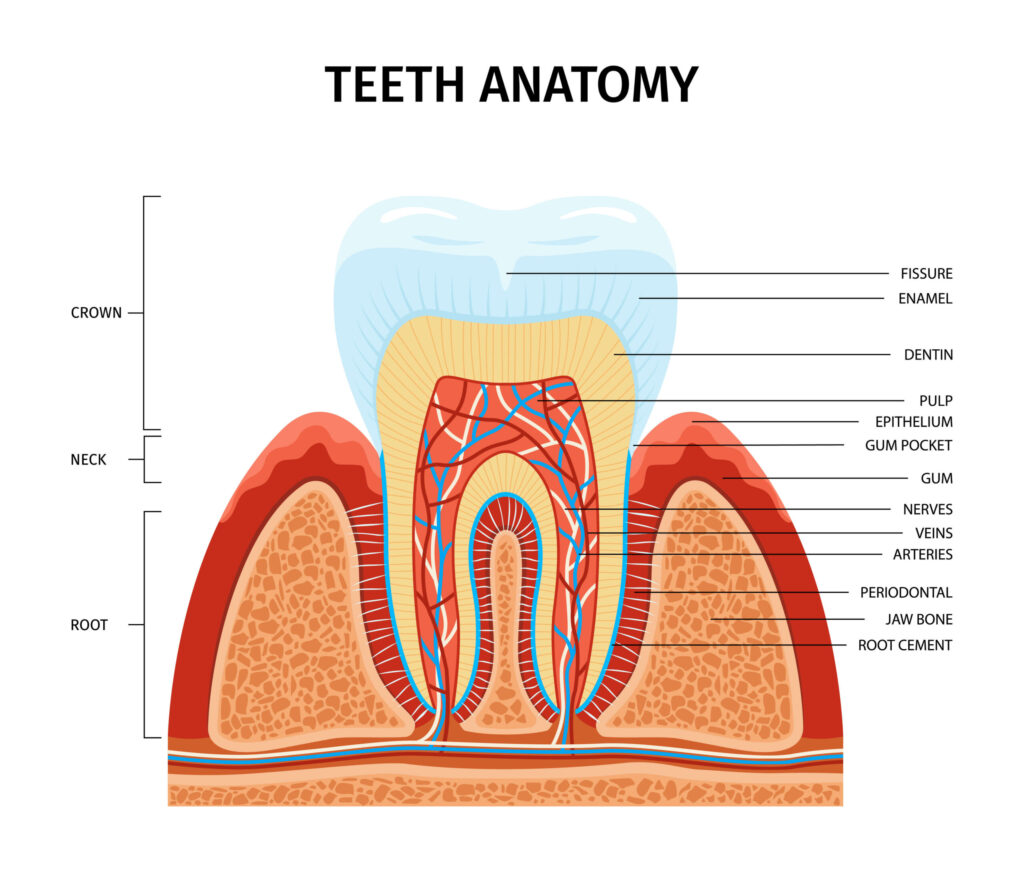What is a healthy tooth?
A healthy tooth is clean and strong, supported by solid bone and healthy gums, and free from cavities or decay.
How does tooth decay start?
When food particles are left on the teeth, especially sugary food, bacteria turn them into acid, which eats its way into the Enamel, then into the Dentine and finally into the Pulp, which can be very painful.

What is gum disease?
Bacteria in Plaque can release substances that irritate and inflame gum tissues. This condition is called Gingivitis. When Plaque is not removed, it hardens around the gum line and forms Tartar. The infection then spreads to the bone supporting the tooth, and eventually the tooth may fall out. This is called Periodontal disease or pyorrhoea. Gum disease may also take the form of a gum boil, which results from infected pulp. As pus collects, it works its way through the end of the root and into the jaw bone and pushes out the gum to resemble a boil.
Oral Care Tips
- Brush your teeth at least twice a day.
- Floss at least once a day.
- If you have some inflammation in your gums (gingivitis), it is normal to experience a little bleeding when you first start using floss. As your gums get healthier, the bleeding will stop. (If bleeding persists, consult your dentist.)
- Dentists recommend using a new section of floss for each tooth.
- Visit your dentist every six months.
Dental health is a matter of life-long concern. Whatever your age, you can and should have a healthy mouth and a pleasant smile. Your dental health is an important part of your general health. Correct dental care can help you keep your teeth for a lifetime. At one time or another, questions on dental health would have cropped up in your mind. You will find 32 such questions answered here.
The anatomy of a tooth:
